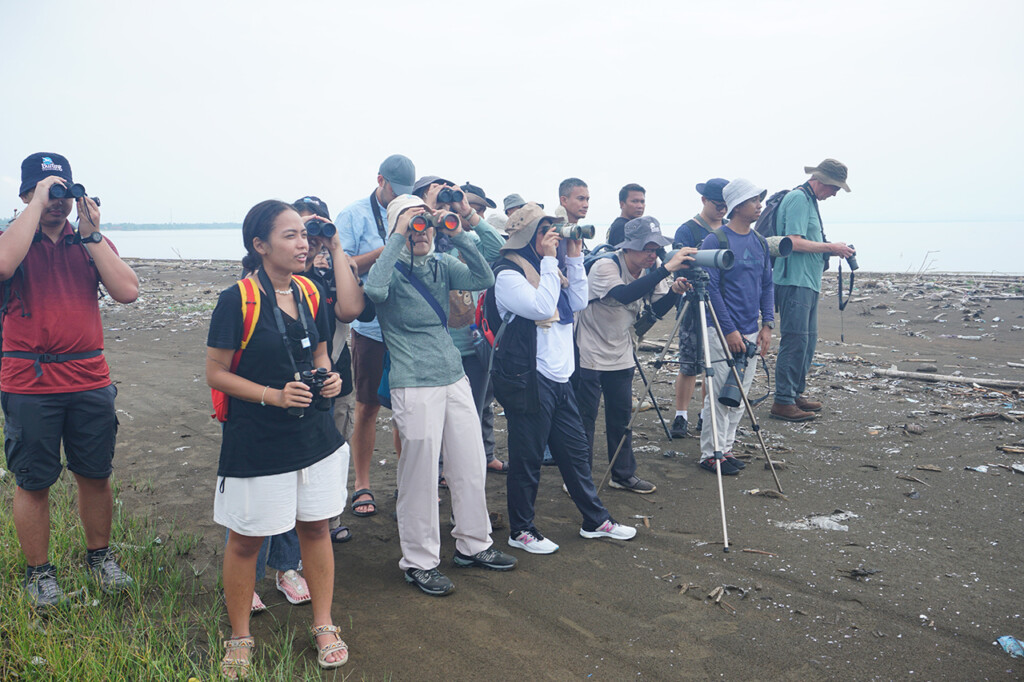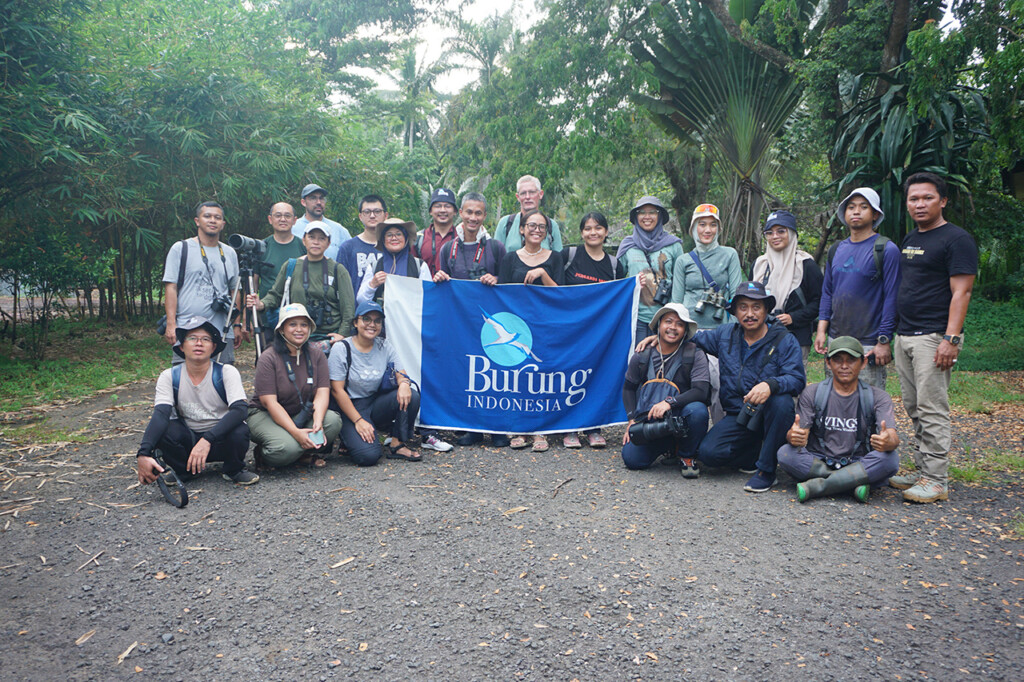For waterbirds, Indonesia is a paradise. With its long coastline, it is the best location for resident and migratory waterbirds. However, this paradise is increasingly threatened by the presence of plastic waste scattered on the shoreline. Kharisma Beach in Pagelaran Subdistrict, Pandeglang Regency, Banten is one of the habitats for water birds.
The beach was also the location of the Asian Waterbird Census (2024) conducted by Burung Indonesia on February 17-18, 2024. The event recorded nine bird species, including 350 individuals of Pacific Golden Plover (Pluvialis fulva), 30 individuals of Sanderling (Calidris alba), 80 individuals of Javan Plover (Charadrius javanicus), 50 individuals of Tibetan Sandplover (Anarhynchus atrifrons), two individuals of Eurasian Curlew (Numenius arquata), two individuals of Black-crowned Night-heron (Nycticorax nycticorax), four individuals of Green-backed Heron (Butorides striata), one individual of Greater Sandplover (Anarhynchus leschenaultii). Unfortunately the beach that these birds inhabit is crowded with waste carried by the waves.
According to Burung Indonesia's Biodiversity and Conservation Officer Achmad Ridha Junaid, waste can have direct and indirect impacts on birds. An example of the direct impact of waste on birds is the used fishing nets that can trap birds.
"Birds trapped in net are likely to suffer injuries, lose a lot of energy trying to escape from it, unable to hunt so that they become dehydrated and starve, drown, and can eventually lead to death," he said.

Furthermore, birds foraging in areas with a lot of waste may increase the risk of accidental ingestion. In some cases, birds even intentionally swallow pieces of inorganic waste because they resemble their food in shape, color and smell.
Waste can also affect birds by invading their habitat. Waste in a habitat can reduce bird abundance. In the long run, the accumulation of waste can affect changes in bird diversity, leading to population declines of certain bird species that are sensitive to the presence of waste.
One of the participants of Burung Indonesia's Asian Waterbird Census, Rangga Yudha Nagara, regretted that the sandy beach, which is a habitat for birds, was covered by waste. According to him, to return the place to clean again requires collaboration from various parties. "We all hope that bird habitats will be protected from threats such as plastic waste. It's unfortunate if the birds' habitat is covered in trash," he said.



